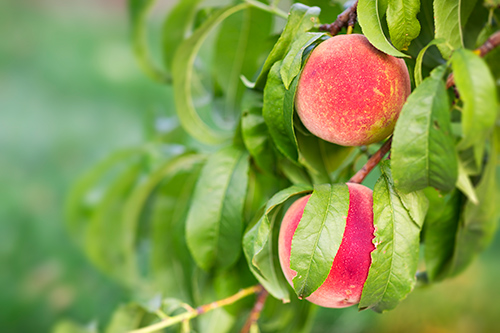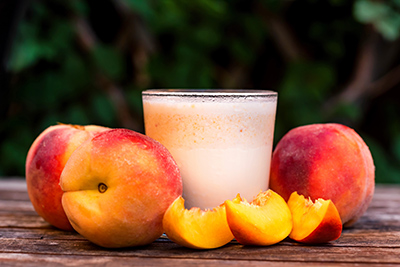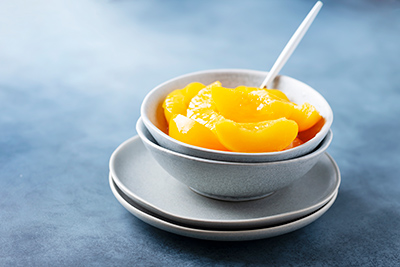Contents
Health benefits of peaches: It is a well-traveled tree with many health benefits, including peaches. The oldest orchards are in China. From there, it was taken to Persia (Iran) several centuries before the birth of Christ. After spreading throughout the Mediterranean more than two thousand years ago, the Spaniards introduced it into the Americas. The peach has adapted well to each region where it has been taken. Over half of the world’s peach production is from the Americas today.
To enjoy a peach thoroughly, it must be tree-ripened. They are their best a day or two after they have been harvested. Savoring a peach under these circumstances is an unforgettable experience. Of course, it is difficult for city dwellers to share this delight since most peaches are picked green and ripened in storage.

Peach Nutritional Facts
The peach’s composition is a balanced combination of provitamin A and B group vitamins, vitamin C, Vitamin E, potassium, magnesium, and vegetable fiber, all in moderate amounts. Peaches contain virtually no sodium or fat. They include nine percent fructose, other sugars, and less than one percent proteins.
It may be said that the composition of the peach is almost perfect for a healthy heart. Vitamins A, C, and E are nature’s best antioxidants; few foods contain all three in such balance. The antioxidant effect of these vitamins generally maintains artery health and those that nourish the heart.
It has been proven that antioxidant vitamins inhibit the deterioration of arteries, known as arteriosclerosis, thus improving blood flow to tissues and organs. The arteries that suffer the most wear and tear nourish the heart. Because of this, the heart benefits from the large composition of foods rich in vitamins A, C, and E.
The B group vitamins (B1, B2, niacin, and B6), found in peaches in significant amounts, are necessary for heart muscle cell contraction and utilization of the energy of fatty acids and sugars.
Potassium, abundant in peaches, and magnesium are essential to maintaining a standard, strong heartbeat rhythm. Additionally, the peach has possibly the lowest fat content of any fresh fruit. Most fresh fruit contains very little fat (except for the avocado.) Fat from this fruit, if any, is always healthful vegetable fat, primarily unsaturated. Notably, peach holds the record for being the lowest in fat: 0.09 percent, or less than one-thousandth. This makes peaches an essential food in low-fat diets often prescribed for cardiac or obese patients.
Not only is the peach the lowest of any fruit in fat, but its sodium content is also among the lowest, with only one milligram (mg) per 100 grams of edible portion. A low-sodium diet helps avoid arterial hypertension and aids the heart’s activity.
Health Benefits of Peaches

Peaches are medicinally recommended for the following conditions:
Heart disease – Eating peaches is beneficial whenever there is any degree of heart failure or impairment in the heart’s capacity to perform its pumping effectively. Even though peaches are not a direct heart stimulant, they aid this organ’s work. Peaches are particularly indicated in these cases:
- Ischemia (insufficient blood) in the coronary arteries, manifested by angina or myocardial infarction.
- Valve lesions that interfere with the heart’s pumping capacity.
- Arterial hypertension requires more heart effort.
- Myocardipathy is a disease consisting of the degeneration of the cardiac muscle, whose most common cause is the consumption of alcoholic beverages.
Digestive disorders—When ripe, Peaches are easy to digest. They contain soluble vegetable fiber, which emollients the digestive tract and is a mild laxative.
Kidney disorders – Peaches are mildly diuretic and have very low sodium and protein content, making them excellent for renal failure patients.
Obesity—Peaches are among the best fruits for creating a sensation of satiety, thus reducing appetite. Their caloric content is relatively low: 43 kcal/100 grams. Additionally, their depurative action facilitates removing the acidic metabolic waste accompanying obesity.
Peach Scientific Facts
- Scientific name – Prunus persica (L.) Batsch.
- Other names – Persian apple.
- French – Pêche.
- Spanish – Melocotón, Durazno.
- German – Pfirsich.
- Description—The peach is the fruit of the peach tree, a tree of the botanical family Rosaceae. It is a typical drupe: fleshy pulp with a hard stone in the center.
- Environment – Peaches are raised in Southern Europe, Europe, and Asia temperate regions. They are susceptible to freezing.
Different fruits with the same properties

Peaches, nectarines, and paraguayas are three fruits that belong to the same botanical species. Their composition and properties are similar, so cardiac patients can substitute one and enjoy greater variety.
- Peach—The peach is the most typical representative of the 2,000 varieties of Prunus persica cultivated worldwide. Some have a smooth peel and an easily removable pit, while others have a velvety peel and pulp firmly attached to the pit.
- Nectarine is, in reality, the same botanical species as the peach, although with unique characteristics. It results from successive crosses between peaches and other species of the Prunus. It is a succulent fruit with a sweet, slightly tart taste. Its composition is similar to peach but with more vitamin A and E and a little less vitamin C and fiber.
- Paraguaya—This belongs to the same botanical species as the peach. In reality, it has its personality. As its name seems to imply, it is from Central Asia, not Paraguay. Its peel is greenish or grayish, with a flavor similar to the peach but somewhat less sweet. Its properties are also identical to those of the peach. They are grown in Southern Europe, although their popularity has spread to other regions.
Fresh and Canned Peaches
(Composition comparison per 100 grams)
| FRESH | CANNED | |
| Vitamin A (ug RE) | 54 | 35 |
| Vitamin B1 (mg) | 0.017 | 0.009 |
| Vitamin B2 (mg) | 0.041 | 0.025 |
| Niacin (mg NE) | 0.99 | 0.593 |
| Vitamin B6 (mg) | 0.018 | 0.019 |
| Vitamin C (mg) | 6.6 | 2.4 |
| Vitamin E (mg a-TE) | 0.7 | 0.89 |
| Magnesium (mg) | 7 | 5 |
| Iron (mg) | 0.11 | 0.36 |
| Sodium (mg) | 1 | 5 |
| Potassium (mg) | 197 | 97 |

Peaches in syrup have lower concentrations of all vitamins (except B6) and higher concentrations of minerals (except potassium). Although canned peaches are not as heart-healthy as fresh, eating them is preferable to not eating the fruit, as can happen during winter.
How to use Peaches
- Fresh—The peach’s velvety peel may produce an allergic reaction in sensitive individuals; thus, it should be peeled. The peel may also carry pesticide residuals. While it is true that the peel contains vitamins, eating a little more peeled peach easily compensates for this loss.
- Canned – While canned peaches provide fewer vitamins and minerals, they are available year-round. Peaches canned in as little sugar as possible are preferable.
- Marmalade and juice.
DISCLAIMER: All content on this website is presented solely for educational and informational objectives. Do not rely on the information provided as a replacement for advice, diagnosis, or treatment from a qualified medical expert. If you are pregnant, nursing, or have any preexisting medical concerns, talk to your doctor before using any herbal or natural medicines.
REFERENCES
- George D. Pamplona-Roger, M.D. “Encyclopedia of Foods and Their Healing Power.” George D. Pamplona-Roger, M.D. Encyclopedia of Foods and Their Healing Power. Trans. Annette Melgosa. Vol. 2. Chai Wan: Editorial Safeliz, 2005. 75, 76, 77. Print.
- Healthline: https://www.healthline.com/nutrition/peach-fruit-benefits
- WebMD: https://www.webmd.com/diet/health-benefits-peaches
- Cleveland Clinic: https://health.clevelandclinic.org/benefits-of-peaches/
- Rutgers: https://njaes.rutgers.edu/sshw/message/message.php?p=Health&m=301
